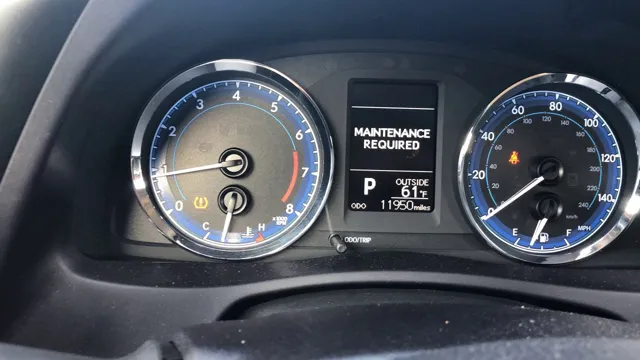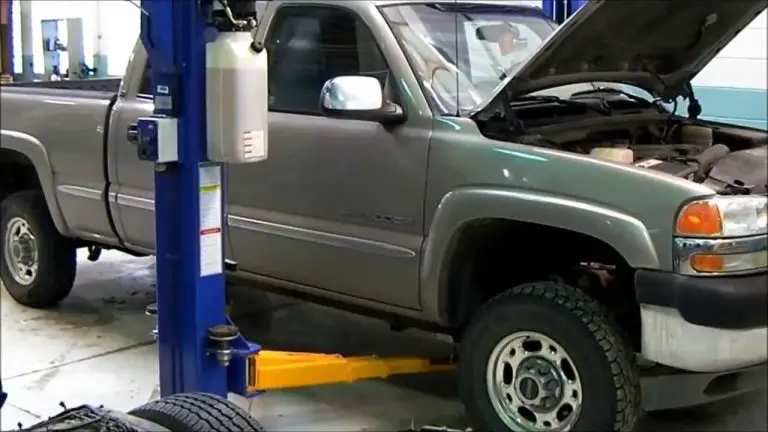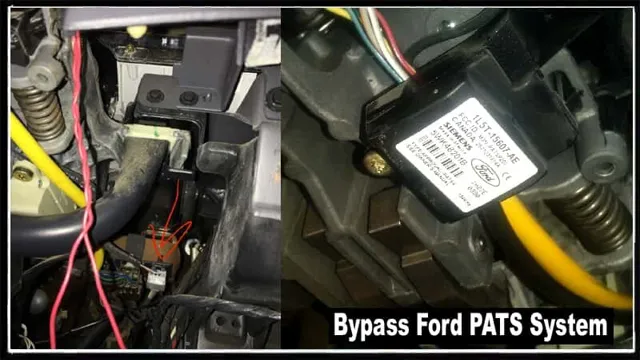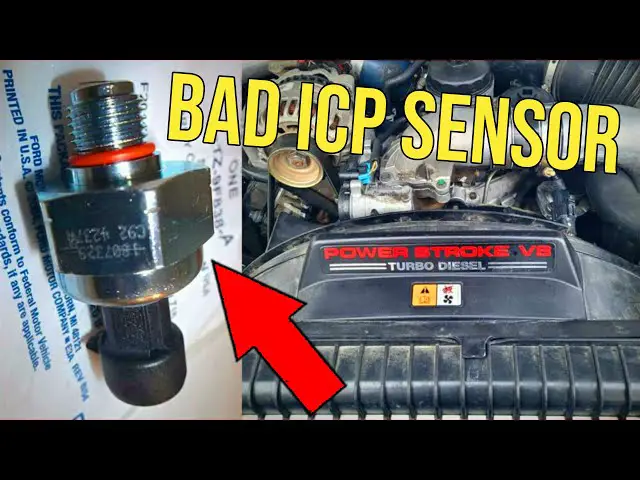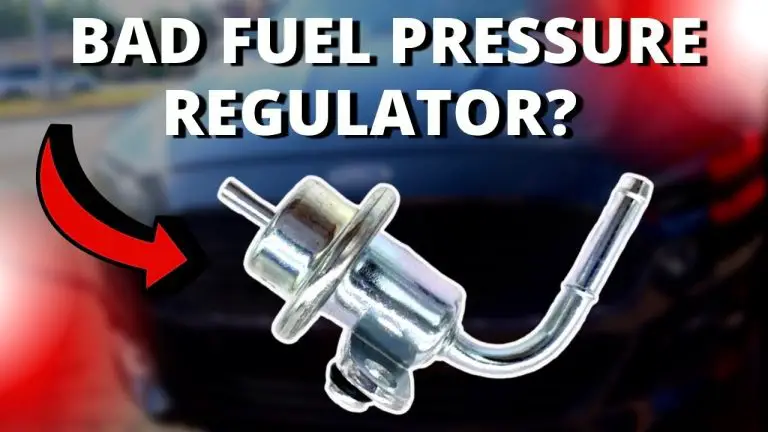Illuminate Your Drive: Simple Steps on How to Brighten Dashboard Lights
Do your dashboard lights seem too dim or difficult to read at night? It’s a common issue, but fortunately, there are tips and tricks to brighten your dashboard lights and make driving at night easier and safer. The brightness of dashboard lights can be adjusted in different ways depending on the make and model of your car. In this blog, we’ll cover some simple ways to enhance the brightness of your dashboard lights.
From adjusting the dimmer switch to cleaning the lens of the gauges, we’ll explore everything you need to know to improve the visibility of your car’s dashboard lights. So, buckle up and let’s get started!
Cleaning the Lights
Are you struggling to see your dashboard lights clearly? It may be time to clean them! Over time, dust and grime can build up on the covers of your dashboard lights, making them appear dim and difficult to read. To brighten these lights back up, start by wiping the covers clean with a microfiber cloth. If there is still dirt buildup, you can use a mixture of equal parts water and vinegar to get them shining like new again.
Simply dip a cloth into the solution and gently rub it onto the covers. Be sure to avoid getting any liquid on the actual dashboard or any electrical components. Additionally, you may want to consider upgrading your bulbs to higher wattage ones to increase the brightness even more.
By taking these steps, you can improve your visibility while driving and ensure that you can easily read all of your vehicle’s important dashboard information.
Wiping with Microfiber Cloth
When it comes to keeping your car’s lights clean and sparkling, there’s nothing better than a microfiber cloth. These cloths are specially designed to trap dirt and debris, leaving your lights looking crystal clear. To get the most out of your microfiber cloth, start by wetting it with some water.
Then, gently wipe down the lights, being careful not to rub too hard and damage the surface. If you’re dealing with stubborn grime or dirt buildup, you can also try using a mild cleaning solution, like soap and water. However, make sure to rinse the lights thoroughly afterwards to avoid any streaking.
With just a few easy steps, you can keep your car’s lights looking like new for years to come.
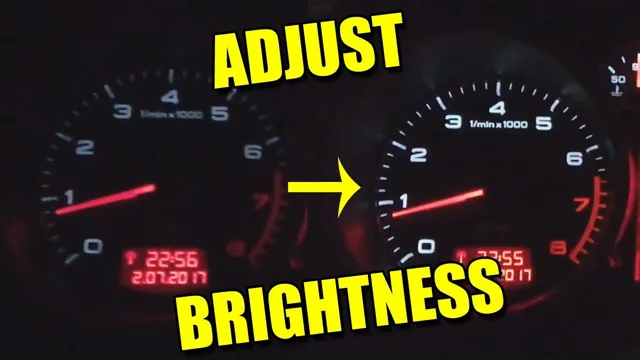
Using Special Cleaner
If you want to effectively clean the lights in your home or car, using a special cleaner is an excellent option. Many household cleaners can be too harsh for delicate lights, causing discoloration or even damage. That’s where a specialized cleaner comes in handy.
These cleaners are designed specifically for lights and are gentle enough to not cause any harm. They are also effective at removing dirt, grime, and other debris that can accumulate on light fixtures. Just make sure to read the instructions carefully before using any cleaner to ensure that you are using it correctly and safely.
With the right cleaner, you can keep your lights shining bright and looking like new!
Replacing the Lights
Is it hard to see your dashboard while driving at night? Perhaps your dashboard lights are dim or even burnt out, making it nearly impossible to read certain gauges. Luckily, the solution to this problem is easy and cheap: replacing your dashboard lights. First, determine what type of lights you need by checking your vehicle’s manual or asking your local auto parts store.
Once you have the correct bulbs, use a screwdriver to gently remove the covering over the dash. Locate the burnt out bulbs and remove them by gently pulling them out of their sockets. Replace them with the new bulbs and secure the covering back onto the dash.
Voila! Your dashboard should now be lit up like a Christmas tree (but in a good way). By following this simple guide, you can brighten up your dashboard lights and make driving at night much easier and safer.
Checking the Owner’s Manual
When it comes to replacing the lights in your vehicle, the first step is to check the owner’s manual. This informative guide provides valuable information regarding the type of bulb required, as well as the steps involved in replacing it. There are a multitude of light types, including halogen, LED, HID, and incandescent, all of which require different methods of installation.
Additionally, the manual can assist in locating the bulb housing, which can sometimes be in hard-to-find areas. While it may be tempting to rush the process, taking the time to read through the owner’s manual can save time and frustration in the long run. With the right tools and a little guidance, replacing the lights in your vehicle is a simple and cost-effective way to improve visibility and safety on the road.
Choosing High-Quality Bulbs
When it comes to replacing the lights in your home, it’s important to choose high-quality bulbs. Not only do they provide better light, but they also last longer and are more energy-efficient. But with so many options on the market, it can be difficult to know where to start.
One thing to consider is the color temperature of the bulb, which can greatly affect the ambience of a room. For example, a warm white bulb (around 2700K) is great for creating a cozy atmosphere in a living room or bedroom, while a cool white (around 5000K) is better for task lighting in a kitchen or office. Another important factor is the bulb’s lumens, which measures the brightness.
Don’t just go for the highest number – consider how much light you actually need in the space. With a little research and consideration, you can find the perfect bulbs to brighten up your home.
Adjusting the Brightness
If you’ve ever found yourself struggling to see your dashboard during a nighttime drive, adjusting the brightness of your dashboard lights can make all the difference. Many vehicles allow you to adjust the brightness of your dashboard, so you can easily find the right setting for your specific needs. There are usually a few ways to adjust the brightness, like buttons on the dashboard or using the instrument cluster menu.
However, some vehicles may require you to turn on the headlights or switch to nighttime mode first. Once you’ve found the right menu or buttons, you can adjust the brightness to your liking. Keep in mind that brighter isn’t always better; too much brightness can actually create glare and make it difficult to see the road ahead.
Finding the perfect balance between bright enough and not too bright is key to improving your nighttime driving experience.
Using Dashboard Control Settings
Adjusting the brightness settings on your dashboard can help improve your driving experience. To access these settings, simply locate the brightness button on your dashboard display. Once you find it, you can adjust the brightness according to your preference.
Brighter settings can be helpful during sunny days or on well-lit roads, while dimmer settings are useful during nighttime driving or when driving through poorly lit areas. It’s essential to adjust the brightness settings to prevent eyestrain, especially during long drives. Keep in mind that overly bright settings can be just as detrimental as dim ones, so make sure to find a balance that works well for you.
By taking advantage of these dashboard control settings and adjusting the brightness, you can enhance your driving experience and prevent discomfort while on the road.
Using External Dimming Device
When it comes to adjusting the brightness of a lighting system using an external dimming device, there are a few important things to keep in mind. First of all, it’s important to choose the right type of dimming device for your specific lighting system. Some devices are designed to work with certain types of lights, so make sure you do your research beforehand.
Once you have your device in hand, the process of adjusting the brightness is relatively simple. Most devices come with a control panel that allows you to adjust the brightness level manually, either through a series of buttons or a dial. Depending on the device, you may also be able to program different brightness levels for different times of day or specific occasions.
Overall, using an external dimming device can be a great way to achieve the perfect level of brightness for your space, whether you’re trying to create a relaxing atmosphere or a bright, lively vibe for a party or event.
Preventing Brightness Loss
Are your dashboard lights losing their brightness? Don’t worry – this can be prevented! First, try cleaning the dashboard area and the lights themselves with a gentle glass cleaner or dashboard cleaner. This can remove any dirt or grime that may be causing the lights to appear dim. Another solution is to replace the bulbs with LED lights, which are known for their brightness and energy efficiency.
Additionally, be mindful of how often and in what conditions you use your vehicle – if you are frequently driving in sunny conditions, the dashboard lights may become less bright over time. By taking these steps, you’ll be able to keep your dashboard lights shining bright and providing you with the maximum visibility you need while driving on the road.
Avoiding Direct Sunlight Exposure
One of the biggest enemies of the brightness and quality of your belongings, especially fabrics and furnishings, is direct sunlight. The ultraviolet rays from the sun can cause colors to fade, materials to weaken, and overall damage to occur. To prevent this, it’s important to limit the amount of direct sunlight that your items are exposed to.
This can be done by using window treatments like blinds, curtains, or shades that can be closed during the sunniest parts of the day. If you can’t control the amount of sunlight that enters your home, consider moving certain items away from windows or rotating their position to limit the amount of exposure. By taking these steps to avoid direct sunlight exposure, you’ll help preserve the brightness and longevity of your favorite belongings for years to come.
Regularly Checking and Cleaning Connections
If you want your TV to remain bright and vibrant, it’s essential to check and clean the connections regularly. Over time, the jacks and ports can accumulate dust and grime, which may cause a darkening effect on the screen or even make it impossible to get a signal. It’s critical to check your TV’s HDMI and RCA connections for loose cables or a damaged port and also wipe them off regularly to remove any accumulated debris.
Think of it like cleaning your glasses – when you eliminate the smudges, everything becomes much clearer. Similarly, polishing your TV connections may bring back the brightness that was lost over time. Don’t underestimate the importance of taking the time to ensure your connections are clean and secure.
A few minutes of preventive maintenance can make the difference between crisp and clear images and a frustrating viewing experience full of darkness and shadows.
Taking Care of the Battery
Taking care of your battery is essential if you want your device to last longer. One of the critical aspects of battery care is preventing brightness loss. Brightness not only affects the quality of your screen, but it can also drain your battery quickly.
To prevent brightness loss, you can adjust your screen timeout settings, lower your device’s brightness, and disable auto-brightness mode. You should also avoid exposing your device to extreme temperatures, as this can also affect your battery’s performance and cause brightness to decrease. Additionally, using a low power mode as much as possible can help you conserve your device’s battery life.
By following these simple tips, you can prolong your battery life, prevent brightness loss, and enjoy your device for longer. Remember to keep your device well maintained, and your battery will last longer.
Keep Your Dashboard Bright
Have you ever found yourself driving at night, struggling to see your car’s dashboard lights? It can be frustrating and even dangerous. Luckily, there are ways to brighten your dashboard lights and make them more visible. First, check your vehicle’s manual to see if there is a brightness control knob or button.
This can easily adjust the brightness of your lights to your liking. If your car doesn’t have this feature, you can try replacing your bulbs with brighter ones. LED bulbs are a popular option as they are brighter and consume less energy.
Keep in mind that some car models may require professional installation for bulb replacement. It’s also important to ensure that your car’s battery is in good condition as dim dashboard lights can be a sign of a weak battery. By following these simple steps, you can improve your driving experience and stay safe on the road at night.
Conclusion
So there you have it, folks! Brightening your dashboard lights is a simple task that can make a world of difference in your driving experience. Whether you’re looking to add a bit of pizzazz to your ride or simply want to be able to see your gauges more clearly, these tips and tricks are sure to light up your life. So why wait? Get out there and let your dashboard shine bright like a diamond!”
FAQs
Why are dashboard lights sometimes dim or difficult to see?
Dashboard lights can become dim over time due to factors such as wear and tear, a faulty dimmer switch, or a dead battery. Dirt or grime on the dashboard can also make the lights appear dimmer than they actually are.
How can I brighten my dashboard lights?
To brighten the dashboard lights, first check that the dimmer switch is turned up as high as it can go. If this doesn’t work, you can try cleaning the dashboard area thoroughly to remove any dirt or grime that may be blocking the light. Another option is to replace the bulbs with brighter ones.
Can I use LED lights to brighten my dashboard?
Yes, you can replace the bulbs in your dashboard with LED lights to improve the brightness. LED lights produce more light for less power and are more efficient than traditional bulbs. However, it’s important to check that the LED lights are compatible with your vehicle before making the switch.
Are there any risks involved in brightening dashboard lights?
While it may seem harmless, over-brightening the dashboard lights can be dangerous and cause glare, making it harder to see the road and increasing the risk of accidents. It’s important to find a balance between sufficient brightness and not causing any problems on the road.

